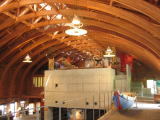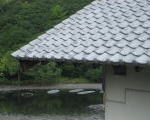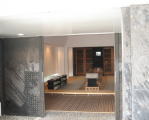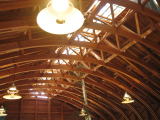
yAbout the Toba Sea-Folk Museumz
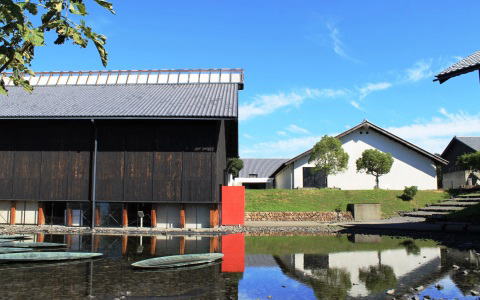 |
The Toba Sea-Folk Museum was founded in 1971 to preserve the knowledge
and history of Tobafs fishing traditions and culture. We are the only museum
inJapan dedicated to understanding the traditions of Tobafs fisher-folk,
and the relationship between man and the sea.
For over 40 years the museum has collected and preserved the antique fishing
equipment of Mie Prefecturefs fishing villages, and researched the traditions
and religion of the areafs fisher-folk
pamphlet@pdf.QM
|
| In 1985 the museum was awarded eImportant Tangible Folk Cultural Propertiesf by@Japanfs Agency for Cultural
Affairs, for our collection of over six thousand exhibits about Tobafs
ancient fishing traditions and antique fishing equipment.The museum was
built in Uramura, outside of Toba city, in order to preserve the fishing
heritage of this area for future generations.It took over 6 years to plan
and build the museum, and it finally opened to the public in 1993. |
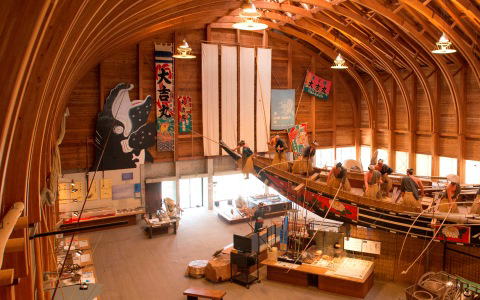 |
yExhibitionz
7 main sections
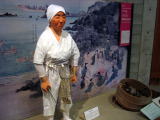
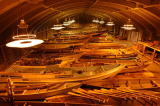
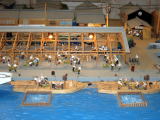
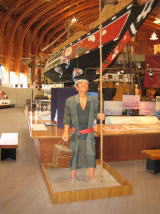
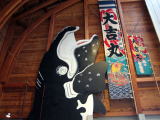
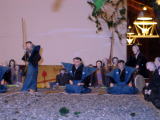 |
1DTRADITIONS OF SEA FOLK
People love the ocean.The oceans of the world have brougt forth life under
the sea. For the Japanese,inhabitants of pacific islands,the ocean has
been more signeificant than just a place where peole get food and salt.The ocean has been used as a highway for trade or as the means of customs
and religion etc.since ancient times.Traditions of Sea Folk has been characterized
by a long and significant relationship between the ocean and people.
|
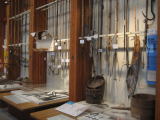
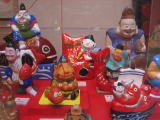
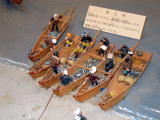
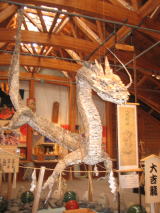
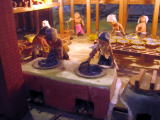
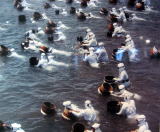
|
2DAMA DIVERS IN SHIMA
The history of Ama(women diver)fishing dates back to 10000year ago.How
could they catch abalones in less than 50 secound without scuba-equipment?
Try holding your breath for as long as the Ama,when waching them dive.
|
3DSEA-FOLK FAITH AND FESTIVALS
In Japan,gods reside everywhere.This is an important point to understand
the Faith of Japanese.Gods may settle in a house, in a boat, and even in
a small piece of wood. Japanese worship natural phenomena because of this
belief. Meet "the Ebisu" god, the Japanese god that brings fortune
and harvest.
|
4DFISHERY IN ISE BAY
Ise Bay used to be a favorable fishing area. People would catch just what food they needed for the day. In those days man depended on himself or being developed. "Utase-ami ryo",trawling nets using a sail-boat was one of traditional methods of fishermen.
|
5DFISHERY IN SHIMA AND KUMANO
In the past, dropping octopus-pots, harpooning Marlins, sharks and whales,
snatching schools of sand lance by scoop net in the area have been replaced
by technological innovation. Don't miss the processing of Katsuo-bushi(dried
bonito) and nori(sea weed).Both of which are essential to prepare Japanese
dishes.
|
6DSEA POLLUTION
Industrial waste dicharge and land reclamation have destroyed tidal flats
and shallow seaweed areas, the home of small marine life. Thermal pollution
from atomic generator plants is affecting the whole environment of the
sea. Our daily life easily becomes a source of pollution. It's time to
Save Our Seas when we notice S.O.S. signals from marine organisms.
|
7DWOODEN BOAT AND NAVIGATION
Travel back in the past and hear the sounds of wave with the collection
of Japanese original and Asian wooden boats in the museum's ship storage.
In Japan, boat builders used to put a spirit called funadama-san in each
new boat he made. As boat builders are becoming fewer in number today,
unique and traditional construction techniques are disappearing.
|
We also keep over 90 small wooden fishing boats on display in our special
collection room.
Four times a year the museum holds special exhibitions and photo galleries,
giving
further opportunities to explore the long relationship between Tobafs
fisher-folk and the sea.
yArchitecturez
The museum is located in a beautiful part of Tobafs countryside close
to
the sea, where you can hear the birds singing and appreciate the sea air.
In the museumfs friendly atmosphere you can explore the long relationship
between people and the sea, looking at over 60,000 exhibits.
| Design: |
Naito Architect & Associates Hiroshi Naito |
| Structural Engineering: |
Structural Design Group Co.,Ltd(S.D.G) Kunio Watanabe |
| Door Artwork: |
Ken-ichi Matsuda |
| Monument: |
Susumu Koshimizu |
| Display Design: |
Kazuhiro Satomi |
| Furniture: |
Shinobu Suga |
| Size of the museumfs buildings |
| hall area of the museum - 17,896 m2 |
| hall areas of building - 1,905 m2 |
| collection room - 2,026 m2 |
| research room - 499 m2 |
| experience program room - 387 m2 |
| cafe - 74 m2 |
Toba Sea-Folk Museum has been awarded several prizes, including
- Japan Inter-Design Forum Prizeby Japan Inter design Forum
- Award of Architectural Institute of Japan by Architectural Institute of
Japan
- Award ofPublicBuilding by The Ministry of Construction.
Etc.
yOpening timesz
21st March `@30th November@@@9am `@5pm
¦Opening hours are extended between
1st December `@20th March@@9am `@ 4.30pm
yClosing daysz
The museum will not be open on 26th June`30th June, and 26th December `30th
December.
yAdmission feesz
|
Adults(over
18 years) |
Children (under 18 years) |
| 1 person |
800 |
400 |
| Groups (20-99 people) |
720 |
320 |
| Groups (over 100) |
640 |
280 |
yAddressz
Toba Sea-Folk Museum
Tokai Suisan Kagaku Kyoukai Foundation
Post code: 517-0025
1731-68 ogitsu Uramura-cho
Toba -City MiePrefecture
TEL:0599-32-6006 FAX:0599-32-5581
yAccessz
iBy Carjfrom the pearl road gounouraoohashih go 3km and turn left.
From Toba tenboudai drive 3.5 km and turn right.
iTrain and Busjcoming from the JR and Kintesu Line Toba train station
and
using the Kamome Bus which goes via pearl road takes about 35 minutes.
Get off at the gUmi no hakabutsukanh stop and the museum is a 1 minute
walk.
KAMOME BUS timetable & route map
|















